
SPECIAL REPORT: By Dr Camille Nakhid
A group of Indigenous Australian grandmothers have organised themselves to stop the Australian government from taking away Indigenous children from their immediate families and their mums and dads.
The group — who call themselves Grandmothers Against Removals (GMAR) — says the stealing of Indigenous children has been going on for more than 20 decades and the group is fighting the government to have the children returned to their families.
Linda Jackson, a 61-year-old Indigenous woman, a child of the Stolen Generation, said she was taken away from her mother in the 1950s when she was a baby in Western Australia. She said her parents had no rights to them so she and her siblings were placed in institutions and missions and the practice of taking Indigenous children away from their families has continued ever since.
Catherine Jackson, Linda’s 42-year-old daughter, said that GMAR was formed because of the large numbers of Indigenous children who were being taken from the hospitals as soon as they were born or from the family homes.
“It’s like a slave industry but better for the white man because they are taking innocent children who will grow up not knowing their culture,” says Jackson.
Jackson blames the high rate of teenage and youth suicide among Indigenous Australians on their growing up without knowing their culture. The police, says Jackson, come in with the DoCS (Department of Children’s Services now called Family and Community Services) social worker and take the children away without any consideration for their families or the children’s well-being.
‘Very scary’
The children are then placed in “horrible situations with people who don’t know how to handle Indigenous kids” and taught the “white man’s ways”. The children are put “in unsafe care where they are raped by paedophiles…they get beat up, they get stressed out, they don’t eat properly. They can’t sleep because they don’t know what’s happening to them. They’re innocent children so it’s very scary for them, very scary”.
The Stolen Generation is not a thing of the past.
Catherine Jackson says it began more than 200 years ago — when “the white man came here and invaded this country” — and it continues today.
GMAR became involved because of their continued concern for the growing number of suicides among Indigenous youth and the large numbers of children going missing. “Not just children, people that are Aboriginal. They were just being slaughtered and wiped out never to be found when the white man finished with raping these kids in care. What do they do with the kids, you know?”
Laura Lyons,* herself a grandmother who has had children and grandchildren stolen from her, agrees that the children have suffered at the hands of their caregivers: “I know through neglect of these white carers our children have died while in care.”
GMAR has been active in the last two and a half years since it was formed and says that stealing and selling Indigenous Australians is a money industry. “They see dollar signs…they think that they can sell these children into adoption agencies. It’s just another slave industry where the white man can come in, take whatever and sell the kids off”.
“They get thousands of dollars per child” says Linda and says that Indigenous Australian families get half the amount of money for fostering a child than white families.
Many reasons
Laura said that she knew of one residential care facility where the carer was being paid the sum of A$11,000 per month for the care of 3 children, aged 11, 10 and 8.
According to GMAR, the police and government officials give a number of reasons for taking the children, such as the use of drugs and alcohol in the families, unsafe homes, accusations of molestation in the family, and often use prison records and mental health records against the families.
“They’ll come up with allegations that have never been proven before but all of a sudden they’re there. So then they build up a case on lies against families,” says Jackson.
One of the grandfathers, Christopher Simpson, said he was taken as a child up to Bomaderry. Back then, he said, a car pulled up full of Aboriginal children and they were taken to Bomaderry where he stayed for 16 years, 14 of them in a home without his own family. The grandfather said that children were kept until they were 21 and that “if you’re a good worker they won’t let you go”.
According to Linda Jackson, the boys are stolen to carry out domestic work, farm work, dairy work or sent to the cattle stations.
Linda Jackson has had three of her grandchildren taken away from her. The grandchildren are currently 14, 2 and one year old. It has been 14 years since the eldest was taken away. Linda Jackson said there was no reason for the grandchildren to be taken away.
“The white woman she come in my house and saying we were all drinking and on drugs. And I’ve never taken drugs! And there was no alcohol there. All of my grandkids. I raised all of my grandkids. Even my sister’s daughter too. I mean this white woman turns up to the door. Sees the Aboriginals in there, then she puts an act on, goes, ‘Ah black fellas, I’m gonna get attacked!’ You know what I mean? Then she goes, ‘I’ll be back in about half an hour’. Goes and gets a tank full of cops!’
‘Still a mystery’
Linda Jackson still does not know why the woman showed up at her place. “It’s still a mystery to me. Why? Because she had no reason to come there.”
Linda Jackson’s son had been arrested and the son’s wife and child had been taken to the police station. Catherine Jackson said that her mother should have been given the option to take the grandchild but the police and government officials put the child in welfare. “So my niece has grown up without family and got a new family.”
The grandmothers of GMAR have vowed to keep fighting to take back their stolen grandchildren and to reunite them with their families and culture.
Associate Professor Camille Nakhid of Auckland University of Technology is a contributor to Asia Pacific Report and chairperson of the Pacific Media Centre Advisory Board.
- *Laura’s story will be featured in an upcoming edition of Asia Pacific Report.


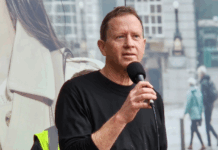
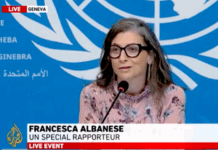

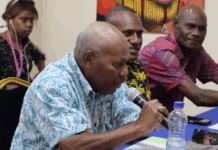
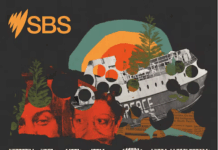


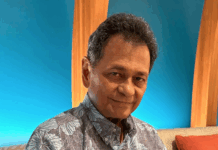










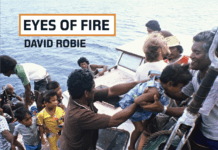



























It is good to hear what’s going on. These women are brave enough to tell their stories in a time where the world and Australia is still racist but everyone denies these things exist. I am looking forward to hearing Laura’s story. Thank you Camille for giving these women a platform to speak.
Children of all races deserve protection and believe this sort of coverage is not balanced at all… from Community Services… Indigenous children are more likely to be the subject of substantiated abuse or neglect than non-Indigenous children (16.3 compared with 5.1 per 1,000 children aged 0-16 years respectively). In 2001-02, 13% of the substantiated cases of abuse or neglect among children aged 0-16 years involved children identified as being of Aboriginal or Torres Strait Islander origin. In all states and territories, apart from Tasmania, the rate of substantiations among Indigenous children was higher than that for non-Indigenous children. These differences in substantiation rates between Indigenous and non-Indigenous children have been linked to their poor socioeconomic status and possibly the intergenerational effects of previous separations from family and culture.3
The Convention on the Rights of the Child
The Convention on the Rights of the Child is an internationally agreed set of standards and obligations which place children centre-stage in the quest for a just, respectful and peaceful society. The Convention spells out the basic human rights of all children – the right to survive, to develop to their fullest, to be protected from harmful influences, abuse and exploitation; and to participate fully in family, cultural and social life. Australia formally ratified the World Declaration on the Survival, Protection and Development of Children, and its associated Plan of Action in May 1991.
Coming from someone who lives in New York City, this was a very interesting read for me. It’s terrible to see these issues happening in Australia. It’s good that these issues are being bought to light. I hope that the GMAR are able to reunite children with their families.
Very good report. When would these perceptions end? The perceptions that a particular lifestyle is ‘ better’ than another, because of one’s socioeconomic status and nonconformity to certain practices and beliefs.
A child’s culture, beliefs and rituals, are significant influences on his/her development. It gives a sense of ‘rootedness’ to one’s self-concept and self-esteem. The Report has shown this clearly, that when one is ‘raped’ of one’s identity, there is little choice but to end one’s life. I hope that this writer continues to explore these indigenous peoples so as to raise consciousness and awareness of continuing contemporary atrocities. Good job!!!
This is worse than human trafficking take it toUN human right and let them deal with the Australian government
Sounds like an attempt to exterminate another minority race. Although we don’t like to hear or acknowledge it, IT IS the truth. This great piece of writing will only advance the pursuit to justice. Excellent work Camille.
On May 26 it was 19 years since the tabling of the Bringing Them Home report, a report which exposed the horrific impact of policies of forced Aboriginal child removal during the 20th Century. This day is known as Sorry Day in Australia but it looks to me like very little has been done to change the theft of Aboriginal children. The women of GMAR are amazing. We need to hear more about them and their fight-good work as always Camille!
Thanks for bringing this dire situation to our attention, Camille. It is unbelievable that this level of prejudice, ignorance, cultural and social insensitivity and greed still persists against Aboriginal children and their families even with the existence of International Human Rights Regulations.
There are too many things that are wrong with our world today especially with the way we relate to each other as human beings. I know that we are capable of better!
What a Sorry State of Affairs. This is the 21st century for screaming out loud. As I recall Australia has had female leaders. Women are described as nurturing, caring, loving and protectors of the generations. Where are the women, who sit in leadership positions in Australia. How can this atrocity be allowed to continue? Not only are these children growing up without a culture. They are also growing up without a conscience. Thank you so much Camille for highlighting this sad and sorry state. Here at home in T & T, and in all homes across the globe we must be very vigilant regarding how our children are treated. Once I heard a very well-placed official in our beloved Trinidad and Tobago say that children are not top priority because they do not have a VOTE. Would you believe, sad but true, and I hasten to add very backward and 18th century and even earlier thinking. Thank you again Camille. This is a start – the paradigm must shift.
Thank you Camille for highlighting this tragic, criminal and inhumane practice. You highlight grievous human rights violations which are directly related to State discrimination, tantamount to persecution, towards a whole population and directly toward the most vulnerable in a population: children. Is it in the child’s best interest to remove them from their families, their community and their culture? To strip them of their identity? The UN Convention on the Right of the Child reminds us that States are primarily responsible for the protection of ALL children and should ensure that all State laws/policies are non-discriminatory and recognise that families and community are central to the care and protection that children need. The experiences of these individuals and the inter-generational effects of such practices, should be heard – loud and clear – again and again. What a rotten state of affairs.
“Children were removed because the Aboriginal race was seen as an embarrassment to white Australia. The aim was to strip the children of their Aboriginality, and accustom them to live in a white Australia. The tragedy was compounded when the children, as they grew up, encountered the racism which shaped the policy, and found themselves rejected by the very society for which they were being prepared” HREOC Inquiry.
I’d like to hear more and more from the survivors.
That’s my nan and my little sister right next to those twats..linda jackson got us taken away from our mother when we were younger and the actions of the workers have left me traumatized..linda jackson met us at the foster home.lied to us said she was going to get us lollies and never came back.we trusted her because she was like a second nan to us but she betrayed us i was only a toddler when i was taken from my mother. These women are two faced and you can not trust them even if they are your own kind.they should not be on this article because me and my family have had to live with their bulls**t our whole lives
So sorry to hear! You should come forward and let your story be heard. All voices are significant in this, if justice is to be done, and especially if justice is to be seen as unbiased and equitable for all.
Please tell your story.
[…] Media Centre chair Dr Camille Nakhid has praised the latest edition of Pacific Journalism Review with a launch coinciding with the […]
Great work Dr Camille. Such gross of human rights abuses need to be exposed. These are indigenous people, in their own land who reserve to be respected and treated as human-beings and legal owners of the land. It is unbelievable that such horrible things are happening in the 21 Century, more in Australia.
More pressure, through social capital strategies, need to be applied on the government to act, positively and humanely.
Great article Dr Camille. Such human rights abuses need to be exposed.
Comments are closed.